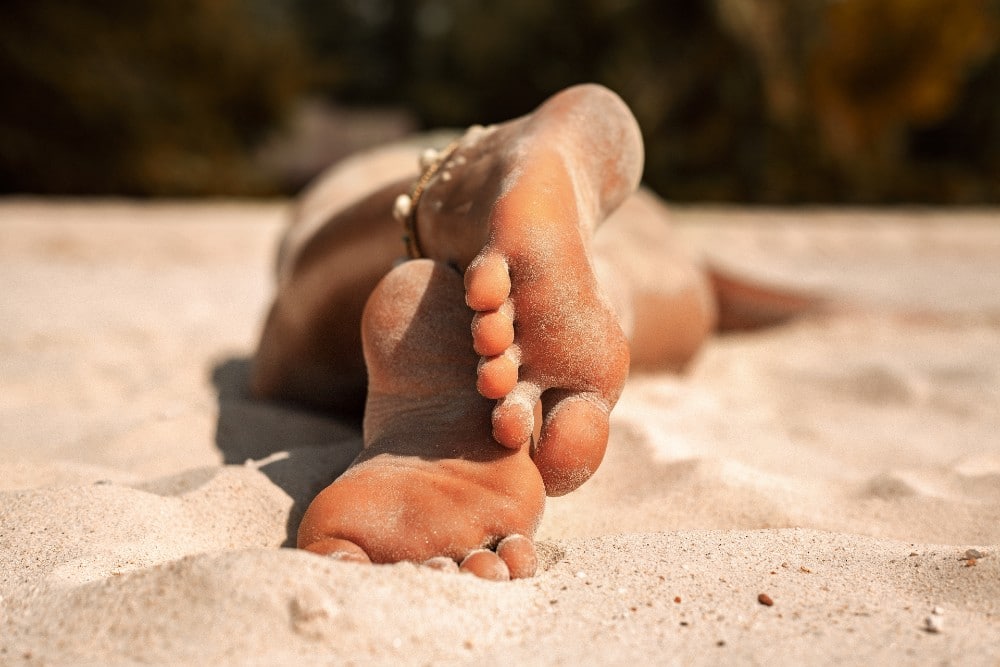Diabetic Wound Care: Challenges You May Face in the Summer
The good news is that summer is here! The not-so-good-news is that this time of year can present some difficult challenges when it comes to caring for any potential wounds you may have developed in your lower limbs.
So though you may be looking forward to spending sunny days at the beach with your family and enjoying fun barbeques with your friends, if you are dealing with a diabetic wound, warmer weather only means one more obstacle in the way of healing properly. From walking barefoot to wading in water, even small flesh wounds can easily fester and refuse to heal.
On top of that, summer’s high temperatures, social activities, and busy schedules all tend to further complicate the wound healing process. So what are you to do? Stay inside for the rest of the season and miss out on all the fun?
Not at all!
But you should definitely take some preventative steps to ensure your wound is healing properly. And this starts by understanding the main challenges you may be facing during the summer.
Doing so will allow you to recognize when there is something wrong and know what to do about it before the situation actually ruins your summer memories.
That’s why we have compiled some of the best ways to help you do just that. So, let’s get to it – we know you are eager to just get out in the sun already!

Stay Away From Bacteria
Whenever you have a break or opening in the skin, germs that are found in the environment can easily work their way into your system. At that point, your only hope against infection is the success of your immune system. Therefore, protecting your wound from coming into contact with harmful bacteria is important – and this can be done by avoiding contact with high-risk surfaces and substances.
You should:
- Never swim in open bodies of water if you currently have an open wound. This is especially true when it comes to stagnant lakes and streams, which could possibly be contaminated with various types of waste.
- Avoid wearing open-toed shoes like flip flops and sandals. These types of footwear can increase your risk for ulceration and/or infections. Protect your feet with closed-toed shoes.
- Come visit our office if you suspect you have developed an infection.
Keep Bandages Clean and Dry
Hiking, bike riding, running, or simply laying at the beach – you may be planning on doing it all this summer, but these activities will often introduce dirt and moisture to your bandages and potentially contaminate your wound. So you must keep your wound dressings clean and dry at all times.
Here are some tips to follow:
- Wrap the edges of your bandage in a layer of medical tape or sticky gauze.
- Change your bandage as soon as you return home or whenever it becomes damp.
Don’t Let Your Wound Dry Out
Yes, excessive moisture can be a problem when you have a healing wound. However, the same can be said if the surface of your wound dries out too quickly. It could start to heal from the outside in and potentially trap infectious material beneath your skin’s layers.
To avoid this, you should:
- Use advanced wound care products like hydrocolloid dressings as directed.
- Come visit our office for specially-designed ointment formulas and dressings if the products you are using now just don’t seem to be working.
Watch What You Eat
What you put into your body can actually assist in healing acute and chronic wounds. Certain vitamins and minerals often found in fruits and vegetables (as well as other foods) can give your body and immune system the boost it needs to quickly heal damage to your skin and other tissues.
Throughout the summer, try to consume more immune-boosting foods, like:
- Watermelon
- Grapefruit
- Cabbage
- Mushrooms

Avoid Sun Exposure
Now, you probably already know this, but it’s worth emphasizing: whenever you go out in the sun (even if it’s just a few minutes), you should make sure to apply sunscreen lotion to your body and protect your wound by keeping a bandage over it to avoid direct sunlight exposure. You should also apply sunscreen lotion on those wound areas that have already healed – this will help minimize scarring.
Stay Hydrated
Without proper hydration, cells in your body will have a difficult time making the full journey through your wound site to repair and rebuild tissue. On an average day, your body requires about 64 ounces of fluid. However, on a hot day or while healing from stubborn wounds, you may need to consume even more water to avoid becoming dehydrated.
Find Expert Wound Care at Waco Foot & Ankle
The bottom line is that, while caring for most serious wounds, you can keep the healing process on track by paying close attention to these added challenges during the summer. And if you find that your wounds are slow to heal or growing worse, come visit our Waco Foot & Ankle office immediately. We offer advanced treatments to help you heal from diabetic wounds (and all other types sores in the lower limbs) as quickly and as safely as possible.
To schedule an appointment, simply call us at (254) 776-6995 or take advantage of our request form online to have one of our trained staff members reach out to you.
